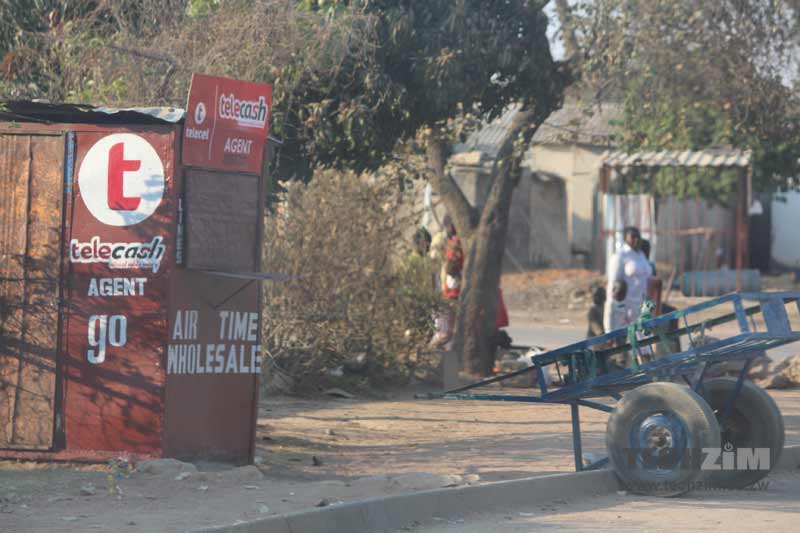Telecel lives, miraculously, and today we get to peek into its inner workings and see how it is staving off death. It’s been years since we last saw positive news regarding the smallest mobile network operator in the country and yet it still stands.
Corporate rescue
Before we get into it, let us remind ourselves that late last year a High Court application to place Telecel under corporate rescue was filed. A few months ago, it was reported that the application had succeeded and that Telecel had been placed under corporate rescue.
Telecel challenged the application, stating that the Communication and Allied Service Workers Union of Zimbabwe which applied did not have the legal standing to do so. Telecel does not owe the union anything.
So, it appears that Telecel avoided corporate rescue on a technicality. Word is, the union is approaching some Telecel creditors intending to represent them and file the application to place Telecel on corporate rescue afresh.
Seeing as the High Court had approved of the corporate rescue, it might be reasonable to expect that they will do so again when the union reapplies.
We shall see how the saga is resolved in due time.
Telecel subscribers
Telecel has been losing subscribers every year at a frightening rate. This is how it looks for the last 5 full years.
We continued on that same trend in Q1. Subscribers fell from 389,951 in December to 307,795 by the end of March 2023. That is a significant 21.1% drop quarter on quarter.
Telecel is now down to a 2.2% market share of active mobile subscribers. They had 5.5% in 2020, 3.7% in 2021 and 2.7% in 2022.
Happy subscribers
One positive by-product of this drop in subscribers is that Telecel likely boasts the best user-per-base-station figures in the country. With so few subscribers, someone out there gets a Telecel base station all to themselves at some point during the day.
We ran a survey a couple of months ago which showed that Telecel’s subscribers are the happiest in the country.
- 50.1% of Telecel customers are either happy or very happy with their internet speed (contrast that with 6.8% for Econet and 7.5% for NetOne)
- 31.3% of Telecel customers are either happy or very happy with their internet stability (it’s 2.9% for Econet and 4.6% for NetOne)
- 25.1% of Telecel customers are happy or very happy with the price of data bundles (it’s 1.5% for Econet and 7.1% for NetOne)
So, Telecel has that to build on. They boast the best customer satisfaction in the country.
Revenue per user
Back in Q2 2022, we found out that Telecel was making 64 cents from each subscriber per month. We estimated that that had fallen to 50 cents per user per month by Q4 2022.
Seeing as total active subscribers fell in Q1 2023, we can be sure that the average revenue per user also fell. This is supported by the fact that:
- Voice traffic market share fell by 0.2%, from 0.7% to 0.5%. Yes my friend, Telecel now has half a percent of voice traffic market share. When you consider that the voice traffic pie itself shrunk, the situation is even worse. Telecel has a shrinking piece of a shrinking pie.
- Data traffic market share remained the same at 0.2%.
If we were to approximate what Telecel’s average revenue per user was in Q1 2023 we would have to make a few assumptions.
In Q4 2022, when analysing total sector revenues, we worked with voice revenue contributing 45% to total revenues and data revenue contributing 40%. In Q1 voice traffic fell whilst data traffic increased, so let us switch them up and assume data revenues contributed 45% whilst voice revenues contributed 40%.
That would mean, of total sector revenues of ZW$161 billion, voice contributed ZW$64.4 billion and data, ZW$72.5 billion. Telecel’s share of that would be:
- Voice (0.5%) – ZW$322 million (US$222,000)
- Data (0.2%) – ZW$145 million (US$100,000)
Voice and data contribute around 85% of all revenues and so we can say 85% of Telecel’s revenue is approximately US$322,000. Or a rough 100% figure of US$379,000.
That is quarterly revenue, meaning monthly revenue is now around US$126,000. That means a revenue per user figure of 41 US cents in Q1 2023, down from 51 cents in Q4 2022.
Do note these are rough estimations but the actual position should be similar.
Infrastructure
Telecel does not have any 5G base stations and they command only 1% of LTE infrastructure:
- 2G – 13.4%
- 3G – 13.3%
- LTE – 1%
- 5G – 0%
Telecel has 13.3% of the 3G infrastructure in the country and yet commands only 0.2% of data traffic. 13.4% of 2G infrastructure is only yielding 0.5% of voice traffic too.
Unfortunately for Telecel, the costs to run a base station are more or less similar regardless of how many people use it. So, it costs Telecel more to run its base stations than it does Econet and NetOne because those other companies can spread the cost over more customers.
So, Telecel can boast the happiest customers as there are fewer of them per base station, however, that digs a hole for the MNO that is hard to crawl out of.
How long will this last?
Here is a summary of the Telecel situation:
- Revenue per user per month – 41 US cents
- 0.2% of the data traffic market share
- 0.5% of voice traffic market share
- 1% of LTE infrastructure
- 2.2% of the subscriber market share
A cloud of ‘corporate rescue’ hangs over the company and yet the shareholder mess that has plagued the MNO remains.
How long will this Telecel steam locomotive trudge along before something breaks? Surely, the US$126,000 they made per month in Q1 was not enough to meet costs. This has likely been the case for a few years hence the aforementioned High Court application which said,
The…conditions indicate the existence of a material uncertainty that may cast significant doubt on the company’s ability to continue operating as a going concern.
If the solvency position of Telecel does not receive prime attention, it will inevitably go under liquidation
That was back in October 2022 when that statement was made and yet Telecel’s situation has only regressed since then. It stands to reason that if questions about Telecel’s solvency were being raised then, it’s almost a certainty that they are insolvent now.
Anyway, Telecel still lives and who knows, they might surprise us all and sort out their shareholder mess, fight off corporate rescue, raise capital, improve infrastructure, reverse their decline and return to profitability.
Also read:
Telecel likely getting around 50 cents from each customer per month now
Telecel is insolvent and facing closure, and needs corporate rescue, High Court application claims














Comments
5 responses
Takaenda ku telecel zvedu
Been enjoying telecel Zimbabwe most recently, decided to use it for data. Their 4G is really stable. Hope they don’t fold completely
Telecel 4G???? Which location?
Thanks for the breakdown. Interested to know how the network is leveraging on the government/POTRAZ promise of shared infrastructure. Is that what’s guaranteeing the “decent” performance that your survey participants mentioned? Or that’s just a consequence of decongestion?
What’s Telecel’s fintech team been up to, though?. The market is now flooded with domestic transfer players. This looked like low hanging fruit they could have capitalised on at some point, or even built their house on.
Notice how it’s dropping one bar every 12 months. If it continues with that trend, 2025 tetoti paivapo.